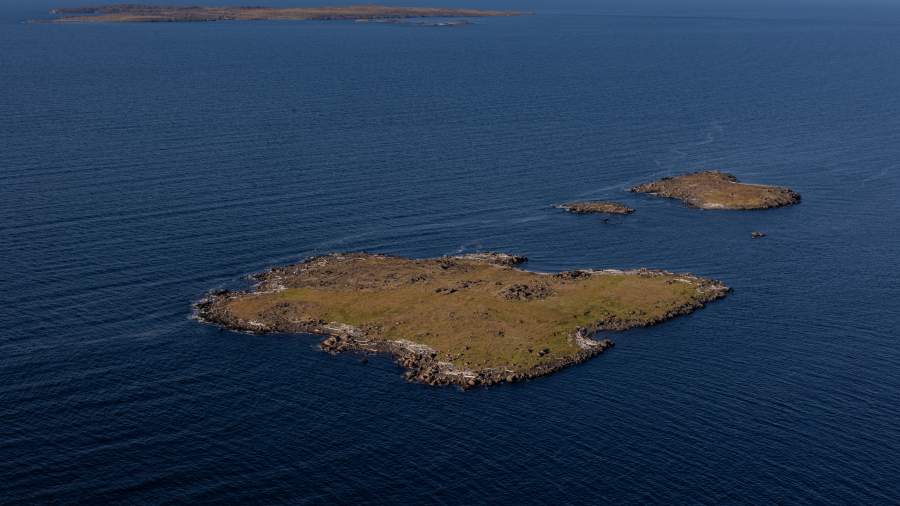Scientists summed up the results of the first field season of the Tamura Arctic research program
- Новости
- Local news
- Scientists summed up the results of the first field season of the Tamura Arctic research program

5 scientific expeditions in the north of the Krasnoyarsk Territory were conducted by Russian scientists as part of a new four-year research cycle "Tamura" - a Rosneft-supported program for research and conservation of biodiversity in Arctic ecosystems. Participants of the program and Rosneft employees told journalists about it during summing up the results of the first field season.
"Rosneft" has been studying the Arctic and subarctic regions since 2012, they told at the event. The company studies the impact of both anthropogenic factors and global climatic processes on the state of local ecosystems - the dynamics of animal and bird populations, other bioindicators. Today, this program is actively expanding and, in fact, has become the largest research campaign since Soviet times.
Thus, within the framework of the Tamura program, which will last for 4 years, Russian scientists and employees of major scientific institutions are studying the Kara subpopulation of the polar bear, wild reindeer populations in the western Taymir, valuable fish species, and bird nests in the mouth of the Yenisei River. In addition, the company is implementing the 1000 Arctic Genomes project, which aims to create the largest genomic database of living organisms in the Arctic latitudes.
The first field work under the Tamura program took place in the summer of 2024 and included 5 expeditions and 99 hours of aerial observations. Expedition participants spent 112 field days in the Arctic latitudes, covering more than 16,800 kilometers by observation aircraft and more than 3,200 kilometers by boat, obtaining about 100,000 photographs and a number of unique data on animal and bird populations in the Arctic region.
As part of the Tamura program, Rosneft, together with employees of the Siberian Federal University, continued research of the wild reindeer population in Taymyr. The research is being conducted using small aircraft, including amphibious planes, and water transportation.
"Western Taymyr is the traditional habitat of large populations of wild reindeer," said study coordinator Alexander Muravyev, a senior lecturer at the SFU Department of Hunting Resource Science and Reserve Management. - These are huge areas with complex terrain, where observations can be conducted with the help of aircraft. Large-scale observations were rarely conducted here in the post-Soviet era, and today our task is to estimate the number and migration routes of animals that play an important role both from the point of view of the local ecosystem and from the socio-economic point of view, as wild reindeer are extremely important for the inhabitants of the North".
Another significant part of the Tamura program was research on rare birds living in the Yenisei estuary on the Brekhovsky Islands, as well as the Kara subpopulation of polar bears. Svetlana Artemyeva, a leading researcher at the Severtsov Institute for Problems of Ecology and Evolution of the Russian Academy of Sciences, said that this season for the first time scientists managed to equip not only females but also males with transmitters with satellite radio tags.
"We have conducted three expeditions, including an aerial survey of the Kara subpopulation of polar bears," Svetlana Artemyeva said. - Such air expeditions have not been conducted, in fact, since the Soviet era. This is the first step towards a full aerial survey of the subpopulation. It will be a significant contribution to world science, because to date there is simply no data on the number and health of animals".
Another significant part of Rosneft's Arctic ecosystem research program will be the 1000 Arctic Genomes program. It is being implemented jointly with Innopraktika, a non-state development institute, and the Biotechnology Campus created with Rosneft's support. As part of it, scientists are already implementing a project to assemble the highest-quality complete polar bear reference genome to date, and in the next three years they plan to sequence the genomes of numerous Arctic inhabitants whose tissue samples are available for genomic sequencing.
"This is a landmark project for Russian and world science," says Evgeny Klimuk, deputy general director and head of the genomic laboratory at Biotechnological Campus. - The work on genomic sequencing of polar bears, whose full genetic characterization has never been obtained before, allowed us to work out the methods, and now we are ready to work on the creation of complete genomes of Arctic inhabitants, which will allow us to study the mechanisms of adaptability to natural conditions, taxonomic status and mechanisms of speciation".
In addition, as Evgeny Klimuk explained, paleogenetic studies are planned as part of the program, which will make it possible to restore the genomes of now extinct ancient animal species.
Переведено сервисом «Яндекс Переводчик»
